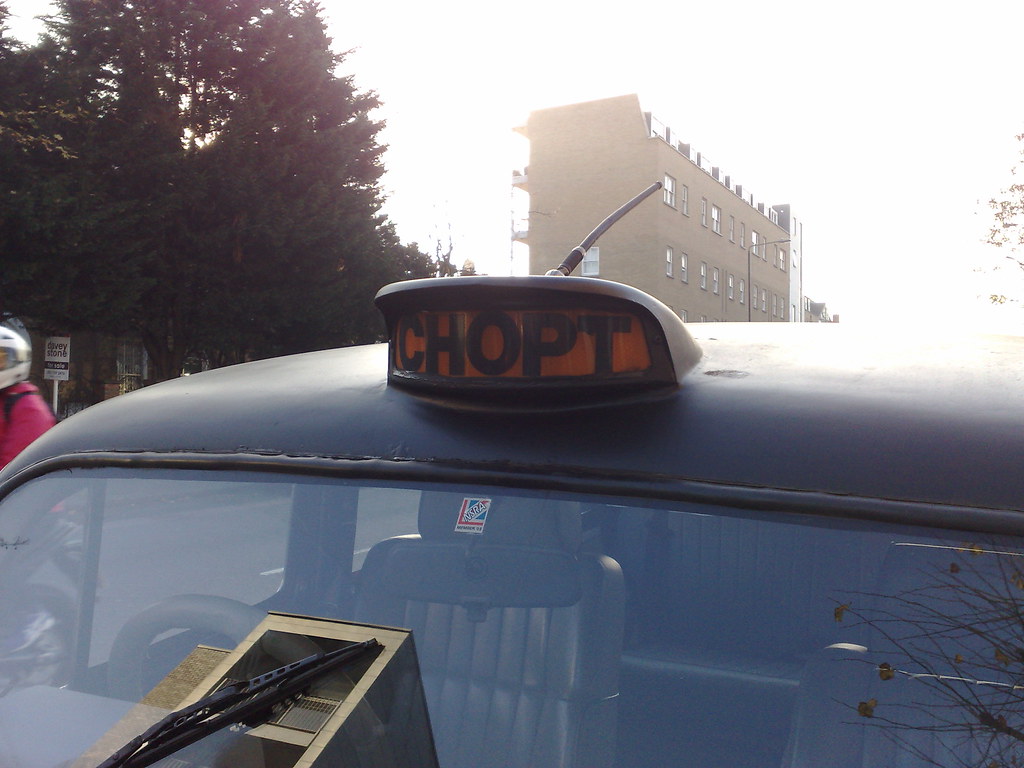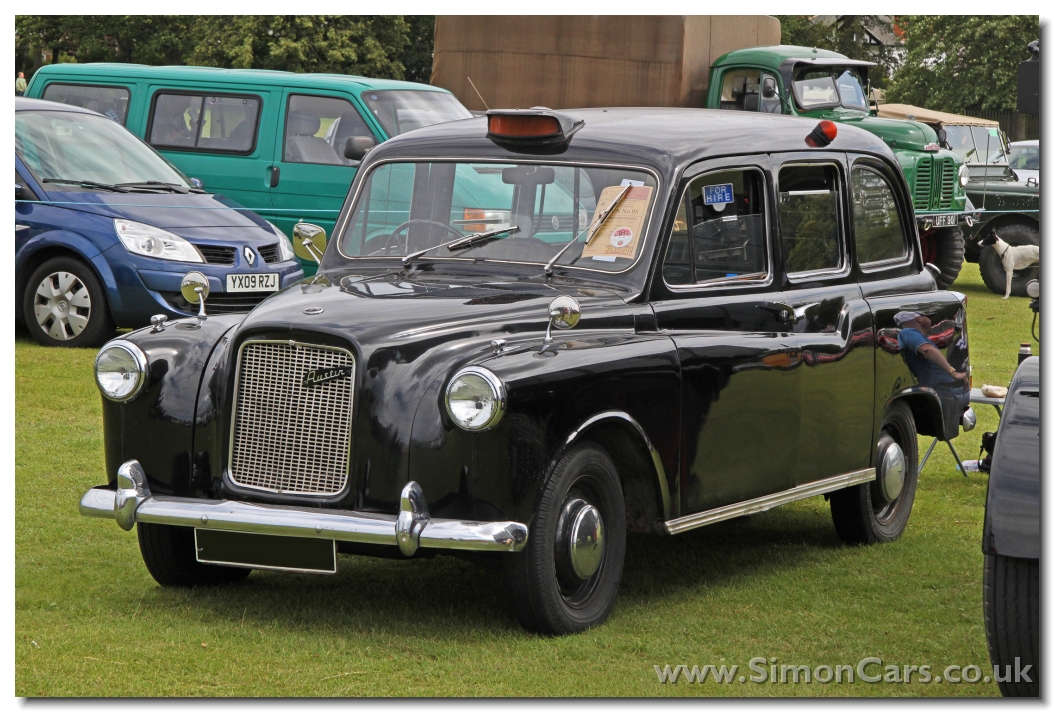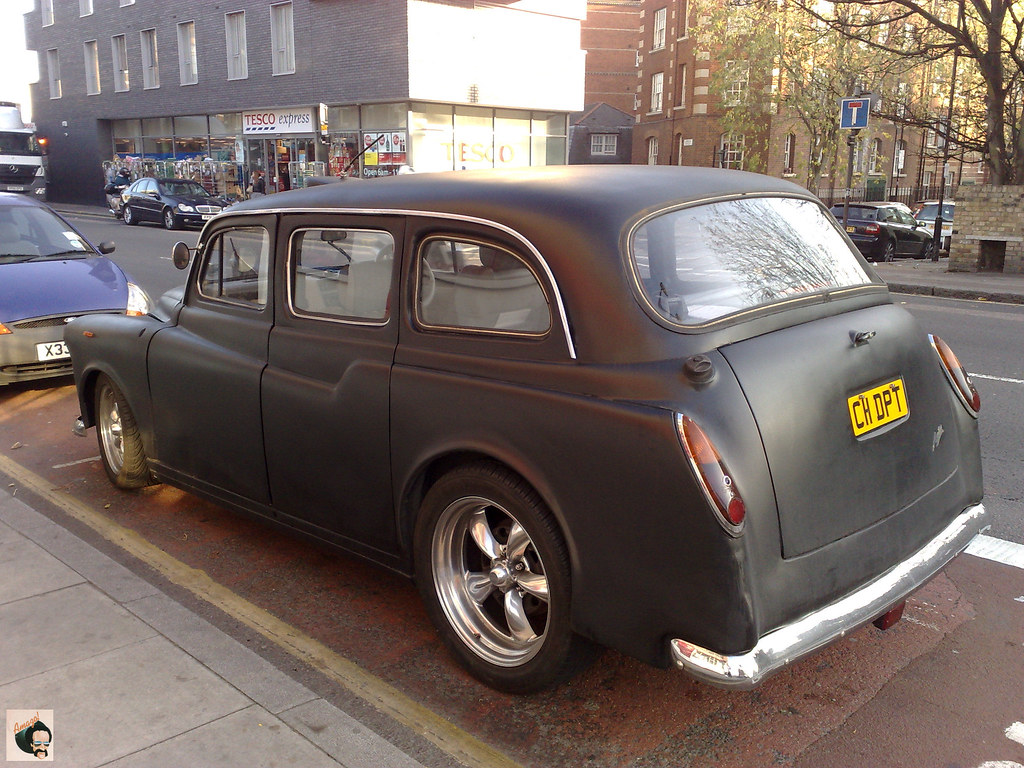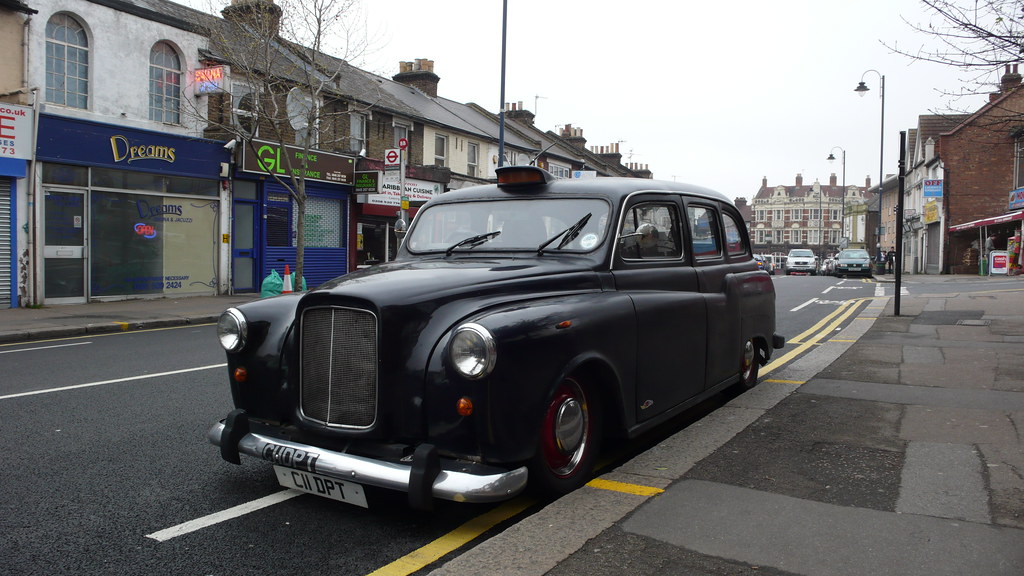The Amazo guide to car-spotting rule 1: always keep a camera on your person; you never know when a hot motor will come into view. Like when popping to the local supermarket for milk.
The driver flew into the store I'd just come out of; he'd literally pulled up to where I was standing (with jaw now dropped), so it seemed only rude not to take a few pics...
Now any petrolhead with a pulse knows 'it's a taxi innit', but what is a 'black cab'? With the help of the Wiki God, let me elaborate.
The FX4 London taxi was the successor to the market-leader Austin FX3, which was produced between 1948 and 1958. Like the FX3, the FX4 was designed by Austin in collaboration with Mann and Overton, the London taxi dealership that commissioned it (and paid for half of its cost) and Carbodies, the coachbuilder that built the body and assembled the cab ready for sale. The original design was by Austin’s Eric Bailey and it was engineered for production by Carbodies and was the first London taxi to go into production that had four doors. Like the FX3, the FX4 had a separate chassis, but with independent front suspension and dual-circuit hydraulic brakes. The first FX4, registration number VLW 431, was delivered in July 1958 and went on test with York Way Motors; the official launch was later that year at the Commercial Motor Exhibition.
The first FX4 was fitted with a 2178cc Austin diesel engine and a Borg-Warner automatic transmission. In 1961, the manual transmission from the Austin Gipsy was available as an option. From 1962, the Austin 2199cc petrol engine was available. However, almost all FX4 taxis were fitted with a diesel engine and, until the mid-1970s most had a manual gearbox.
In 1969, the cab was altered, to offer a new version in place of the abandoned replacement model and to amend some of the shortcomings of the original. The original Austins were provided with small rear stop and taillights and roof-mounted turn indicators, commonly known as "bunny ears". On the revised model, the rear wings were modified to accept the taillights from the MkII Austin 1100 / 1300, front indicators were also mounted below the headlights and side indicators to the front wings. The "bunny ears" were alas abandoned. In 1971, the 2178cc diesel engine was replaced by a larger, 2520cc version. This engine proved to be better for use with an automatic gearbox and gradually fewer cabs with manual gearboxes were sold. The petrol engine was discontinued in 1973. In that same year Carbodies' owner, BSA collapsed and was bought by Manganese Bronze Holdings, who continued making the FX4, with only detail changes until 1982, when Carbodies, who had been producing the FX4 for Austin and Mann and Overton, took over the cab's intellectual property rights when British Leyland lost interest in it, so began to produce it under their own name. Carbodies changed to the Land Rover 2286cc diesel engine and also offered the similar-sized Land Rover petrol engine as an option; the new model was branded the FX4R (R for Rover).
The FX4R was not well-recieved by the trade, due to poor overall performance from the new engine; some cab operators replaced the Land Rover engine with the Perkins/Mazda 2977 cc diesel, with showed a marked improvement. a lot of 'R's were retrofitted with the new engine and other detail improvements - the FX4Q - and were re-registered with a 'Q' plate. In 1984 London Taxis International (LTI) was formed after Manganese Bronze Holdings bought the London taxi dealers Mann and Overton. LTI replaced the 2286cc Land Rover diesel engine with the new 2495cc version, plus other detail changes (new bumpers and an improved dash) with he new model designated the FX4S, in turn replaced in 1987 by the FX4S-Plus, which had a rear compartment redesigned to allow five passengers, a new moulded plastic dashboard was also fitted. In February 1989 the Fairway was introduced with a 2664 cc Nissan TD27 diesel engine, with many more detail changes were made until the very final Fairway made, with registration mark R1 PFX (i.e. RIP FX), was built on 1 October 1997 and was presented to the National Motor Museum at Beaulieu; the baton having been passed to the all-new TX1. The basic design survived over 40 years and despite the last FX being built over 14 years ago, you still see enough of them on London (and elsewhere) streets, such is the affection that cabbies have for the old girl.
Someone had even more affection for their FX4, as this '91 Fairway has enough modifications to it to send the average 'fare' running in the other direction. As the driver (looking ironically fitting in suit and tie) was in a rush, all I could glean from him was a few rushed details. It has an MG RV8 engine, and rides on airbags to keep it close to Mother Earth. The FX4 has a separate chassis, making body mods an easier task than on a unitary construction car ; the well-executed roof chop was done a few years ago as the pic below is from 2008; still with it's original engine:
It's obviously come a long way since then; those headlight surrounds look like they're off a '55-'57 Chevy pickup, the arches have been modded to squeeze those excellent Torq-thrust wheels in, no doubt in my mind that the rears are attached to probably a Ford 9-inch or 10-bolt GM axle. That bonnet scoop made from an old 'FOR HIRE' sign is a stroke of genius, as is the delicious play on words with the no. plate - C11 DPT turned into 'CHOPT'.
A black cab you'll never see in a taxi rank, mores the pity. London would be a lot more fun with a fleet of these babies roaming the streets!
 |
| Neat (and fitting) use of a 'TAXI' sign as an air scoop |
 |
| Damn straight it is! |
 |
| Did you ever think a black cab could look that mean? |




.jpg)


No comments:
Post a Comment